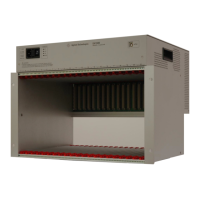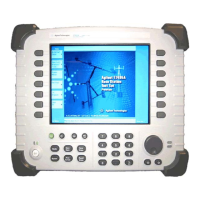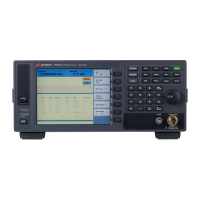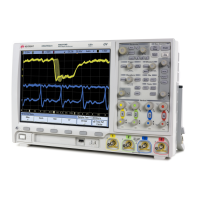Chapter 2 83
Block Diagrams
A7 Baseband I/Q Assembly (Option B7C)
A7 Baseband I/Q Assembly (Option B7C)
The A7 assembly processes I and Q baseband signals to facilitate
analyzer measurement of I and Q signals, both independently and
together. The baseband I/Q assembly performs the following functions:
• provides selectable load impedances of 50Ω, 600Ω, and 1MΩ
• provides input voltage protection
• provides balanced and unbalanced input options
• performs both digital and analog calibration of the baseband signals
• performs analog to digital conversion
• prepares the input signals for further processing by the CPU
I/Q Input Circuitry
The external I, I, Q, and Q connectors allow input of balanced and
unbalanced signals. Input impedances of 50Ω, 600Ω, and 1 MΩ can be
selected through the front panel. The 50Ω and1 MΩ can be used for
unbalanced inputs, while the 600Ω and 1 MΩ impedance setting can be
used for balanced inputs. Protection is provided against excessive ESD
transient and DC input voltages using varister clamps.
Input Amplifiers
The first of three input amplifiers allows for high impedance, positive
and negative inputs signals, while the second and third amplifiers
convert differential signal inputs to single-ended signals.
ADC
The ADC converts the analog I and Q signals to digital and has a
resolution of 14 bits.
Digital Signal Processing Block (DSP)
The DSP block consists of a deserializer, a MUX, and a custom ASIC
chip that performs essential signal processing tasks, such as filtering
and decimation. The deserializer converts the serial output of the ADC,
whether an I, Q, or I/Q signal, to multiple lines that feed into the MUX.
The MUX distributes the signals to the ASIC chip.

